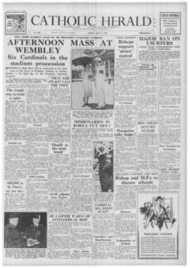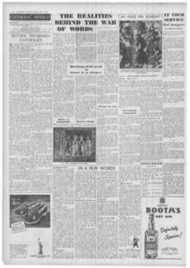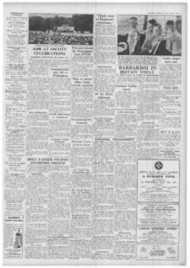Page 1, 7th July 1950
Page 1

Report an error
Noticed an error on this page?If you've noticed an error in this article please click here to report it.
Tags
Share
Related articles
Prelate Wounded
Still No News From Korea Missions
New Head For China Mission
- 8eoui Vicar
Bishop Will Go To Red City
MISSIONARIES IN KOREA CUT OFF?
0 word has been received at the Vatican from the missions in southern Korea and grave concern is expressed about their welfare.
The area of Choonchun, headquarters of 17 Columban missionaries—mainly Irish—fell to the Reds only a few hours after
the attack was launched. Part of the Choonchun Prefecture Apostolic extends into the northern zone.
The Columban missionaries had consistently been rethsed admittance to the missions in the northern part of the prefecture ever since Korea was divided. The prefecture is headed
hm
by Mgr. Thomas Quinlan, Irish Columbian priest. The last information from the Choonchurt missionaries is a letter dated June 20, five days before the war began. It made no mention of any impending trouble. All the missionaries were reported well at the time.
There are 24 Columban missionaries—also mainly Irish—stationed around Mokpo and on the large island of Cheju to the south. The Columbans form the largest group of foreign missionary priests in Korea. Another large group of missionary priests in south Korea are the Paris Foreign Missionaries, the mission group that originally built up the Church in Korea.
Seoul Cathedral
There were 15 Americans among some 75 foreign missionaries working in South Korea when it was attacked by the northern Communists. Three Maryknoll nuns have since been evacuated to Japan. Reports from Seoul and other mission centres before the invasion told of thousands of Catholics who had slipped across the 38th parallel to escape religious persecution in the north. Now, once again, they are on the move. The Cathedral of fallen Seoul is one of the hest known buildings in Korea because it occupies the capital's most commanding site. Many of the older people among Seoul's Catholics still remember the opposition at the time it was built because it was then the only building higher than the imperial palace. Also in the cathedral compound on this high hill are an orphanage, a priests'residence, the Apostolic Delegation, a school and a chapel used by U.S. military personnel during the occupation.
blog comments powered by Disqus









